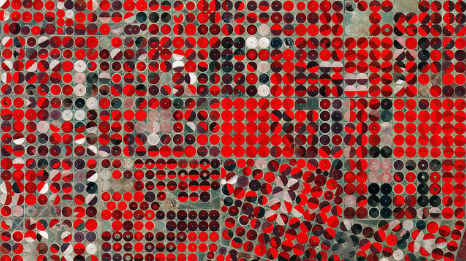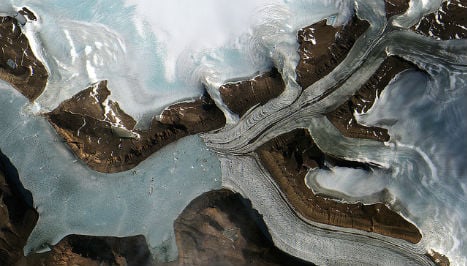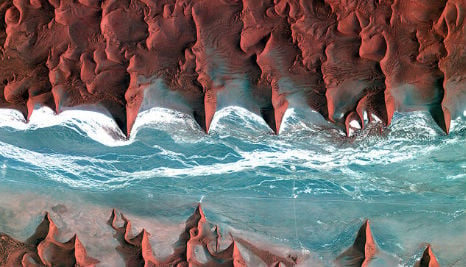The exhibition 'Spaceship Earth' which opened Monday, is a collaboration between the ESA and centre for electronic arts Ars Electronica, ahead of the Ars Electronica Festival taking place this week.

Image: Fields in deserts in Tubarjal, Saudi Arabia. Credit: ESA/Sentinel-2
Some of the images show fields, rivers and glaciers viewed from space, providing insight into ESA's earth observation programme as well as weather trends, the expansion of cities, and the effects of climate change.
The interactive exhibition has been designed by the Ars Electronic Solutions and the space is meant to represent an orbit of a satellite, with the centrepiece being a depiction of Earth.
As well as showcasing the unusual photographs, the exhibit is also about the work done by scientists to understand issues such as crop yields, water and air quality and ocean temperature.

Image: Glaciers in West Greenland. Credit: ESA/Sentinel-2
'Spaceship Earth is being exhibited at the Ars Electronica Center is part of the centre's annual festival taking place between 3rd and 7th of September in Linz.
The festival looks at the intersection between art, technology and science and this year the theme is 'Habitats for the post 21st Century' and will feature exhibits, events and performances about the future of cities, from robots and architecture to climate change.

Image: River delta in Namibia. Credit: Kompsat-2, KARI/ESA



 Please whitelist us to continue reading.
Please whitelist us to continue reading.
Member comments